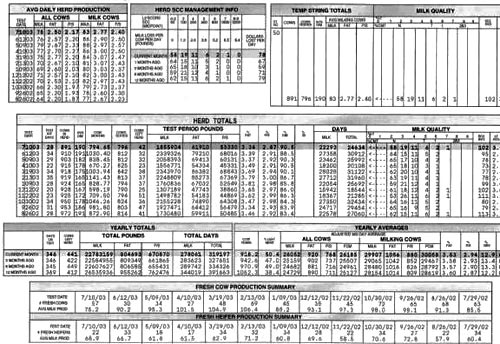Conventional Milking Systems
There is no doubt that conventional milking systems cause a number of milking performance and milk quality problems. These problems include liner crawl, incomplete milkout, uneven udders, teat swelling, teat canal scarring (slow milking quarters) and mastitis to name a few. The following is a description of how your conventional milking system causes some of these problems and was authored by Westfalia-Surge as a part of a recent US patent document disclosure in December 2004:
During traditional manual milking, which is a pressure milking method, almost the entire amount of milk present in the udder can be milked. In the machine suctional milking method there is a problem, first of all some quarters are milked too long although no more milk flow is present, and, on the other hand, in individual quarters, the milking process is ended too soon and therefore residual milk remains in the udder. The reason for this is first of all due to the process but also due to anatomical reasons. There is a possibility that when the udder is kinked or rotated due to unfavorable shape of the udder and also due to the fact that the milking tool does not exactly fit the teats, this has a negative influence on the suctional milking process, so that the milk-conducting channel of the teats becomes closed too soon. As a result of this, above all in the end phases of the milking process, namely in the post-milking phase and the milking-out phase, the milk yield is reduced in comparison to manual milking. Also, the quality of the milk milked can be influenced adversely, since, especially in the final phases of the milking, milk components are obtained that have an especially high fat content.
During the milking process, the tissues of the udder between the gland and the teat cisterns draw increasingly together under the action of the milking pressure. Due to the increased vacuum inside the teat rubber of a milk cup and due to the declining milk flow toward the end of the milking process, fluid can accumulate in the area of the Furstenberg venous ring. This accumulation of fluid may lead to the development of edema, as a result of which, usually, permanent closure of the milk-conducting channels in the teats may occur, which can be opened again only after application of a higher tensional force. This effect is further accentuated by the acceleration pressure and flow pressure of the milk column. Generally, this leads to the fact that the milk cup begins to creep up on the teat and the milking out and post-milking phase occur too early, as a result of which the milking process ends sooner than desired.
In order to avoid this effect, it is known that a down-directed force can be applied to the collecting piece of the milking tool, as a result of which the udder tissue will be tensioned and the closure can occur later. After a predetermined period of time, the post-milking process and thus the entire milking process is ended.
In the milking processes known in the art, a problem is that when the "milking-out" is too strong, adverse effects on the condition of the teats may arise. Especially, there is a danger of hyperkeratosis.
DHI Data:
The following is DHI data for a conventional herd following proper protocols that achieves a relatively low SCC (around 100,000) but at the high cost of a large cull rate (40% to 50%). This is typical of conventional milking systems that make it impossible to achieve both a low SCC and a low herd turnover!
